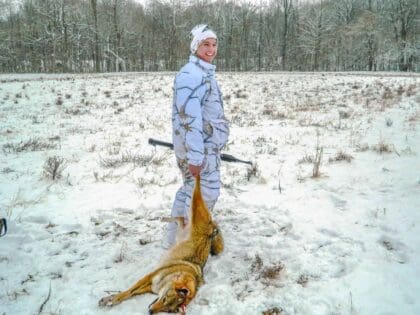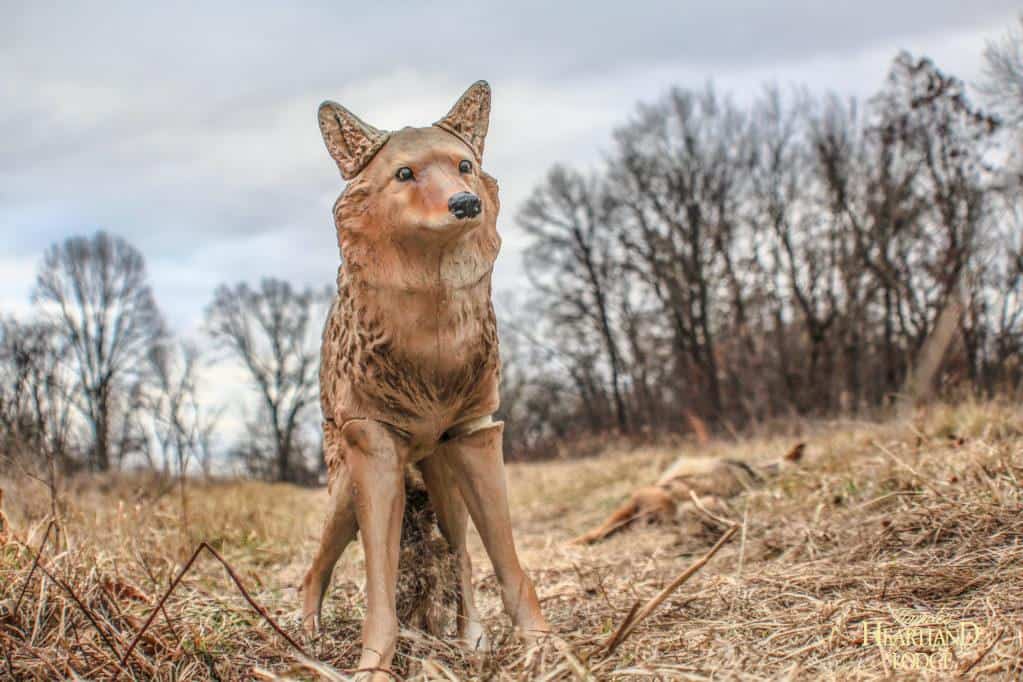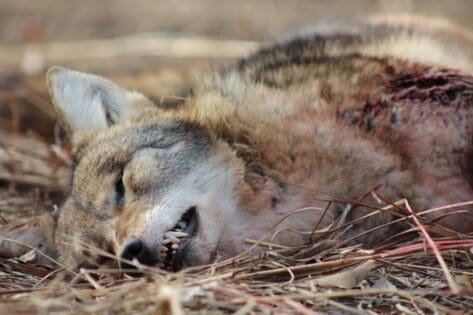There’s no better time to go coyote calling than right now in the midst of winter! Let the snow fall and the lead fly!  Here are some basic tips to get you started on coyote calling…
Here are some basic tips to get you started on coyote calling…
Wind Direction and Coyote Calling
Coyotes tend to come in downwind, or at least try to circle in downwind in their final approach almost 90% of the time! It is imperative to have a set up where you can see your downwind side. If you are hunting by yourself, it’s helpful to have an electric caller. This way you can set the call upwind of your position and try to catch the coyote circling in downwind. It depends on what type of country you’re hunting but in the Midwestern farm country, it seems that coyotes will try to follow cover such as a draw or creek bed to the call. Best case scenario you have the wind in both your favor and the coyotes. They’ll usually come in faster and will not be as timid and edgy.
Distress Calls for Coyote Calling
You can call a coyote in with a variety of different calls. Some of the most popular distress sounds are cottontail, woodpecker, and rodent distress. These calls are simple to use and are effective throughout the coyote’s range. It’s best to try and match the distress sound your using to the type of habitat in the surrounding area. For instance, if you are hunting in an area that has good rabbit habitat, it’s more “natural” to use a rabbit in distress. Regardless of which rodent distress I use, I like to call for a minute or two and then pause for 30-40 seconds. Calling for several minutes non-stop can pinpoint your location and tends to make coyotes more wary to the call. The picture on the right is a healthy female that came into the rabbit distress.
Howling for Coyotes
Howling is another effective way to call in coyotes. There are a variety of different howls coyotes make and each has its own specific meaning. Locater, interrogation, female invitation, and pup howls can all bring in coyotes. During the breeding season, mid-January to March, female howls and interrogation howls can work effectively. If you get a response, try to mimic the sound they are making. Just because a coyote doesn’t respond to your howling, doesn’t mean there not out there. Many times, you won’t get one to howl back and yet call one in. The bottom picture is a big alpha male that came into the female invitation howls 
Coyote Calling Set-Up, Location is Everything!
Ideally you want to set up where you can see a couple hundred yards and cover your downwind side. You can really cover the ground if you’re hunting with a partner. The caller can set up upwind of the other hunter 50-100 yards. I usually start off with howls of some variety wait about 10 minutes and then begin a distress sound. Different areas will yield better results with different calls. I usually start with a rabbit or bird distress sound. Again make 2-3 calls spanning about 5 minutes with the distress and wait another 10 minutes or so and repeat. If that doesn’t yield any results, I like to finish up with a coyote pup distress.
Coyote hunting takes a lot of patience and perseverance. If you make 10 different sets, you might call a coyote in 2 or 3 times. To up your percentage, keep an eye on the downwind and try to sit at least 45 minutes to an hour at each location. When you do call a coyote in, take note of the wind direction and the way the coyote reacted to the calls. Try to learn from every coyote encounter you have and apply it to the next setup.
Good luck!!
-Zach
Zach Jumps
Harpole’s Heartland Lodge
Zach@Heartlandlodge.com
Last Updated: December 27th, 2022



